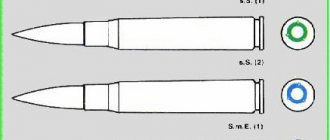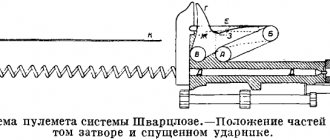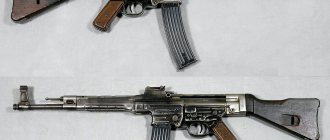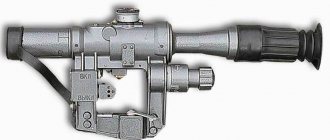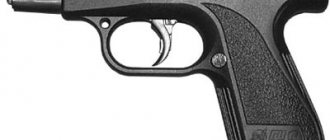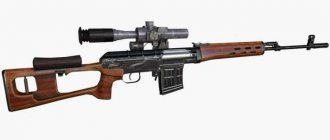10.11.2020
When wondering how cartridges are made in a factory, you should take into account that the production process may differ at enterprises in different countries.
So what metal are cartridges made of? It is impossible to answer this question unambiguously. Depending on the type of weapon, purpose and technology, several metals, alloys, plastics, varnish coatings, sealants, and industrial lubricants are used in each cartridge. The composition of the detonating mixture differs, which is kept strictly secret by manufacturers.
The process of producing cartridges in Russia consists of several main stages. Moreover, hunting cartridges are made in the same way as military ones.
Making a sleeve
The material for the manufacture of sleeves is bimetal or brass, in some cases steel, which are supplied to the line in the form of narrow metal plates. From these strips, blanks for future cartridges are cut out on a multi-row stamp - metal “coins” or washers, depending on the caliber of the future cartridge.
The next stage is the formation of the sleeve on the press to give the shape of the glass. Depending on the caliber, from one to 6 operations of drawing and trimming the cartridge case barrel will be required.
Next, the lathe cuts a recess for the capsule and a ring groove on the bottom of the cartridge case. The next step is for the press to form a narrowed neck of the cartridge case.
This completes the molding, and the sleeves are sent for annealing. Under the influence of high temperatures, fatigue is relieved, hardness increases, and shape is stabilized. The final process is acid etching and grinding to clean the surface.
How cartridges are made
How cartridges are made
May 15 '16
In Lonoke County, Arkansas, there is a Remington plant that produces ammunition that is supplied to many countries around the world. It is the company's only ammunition plant, but has enough capacity to meet the demand for Remington ammunition in the United States and beyond.
On an area of 485 hectares there are production workshops, living quarters, a canteen, a hospital, other buildings (in total there are 46 buildings on the territory of the plant with a total area of 70,000 sq. m), as well as a shooting range and hunting grounds inhabited by wild animals. The plant was built in 1969 and has been in operation since 1970. Since the nearest city is more than 30 km away, all the necessary infrastructure for work, accommodation and food for staff has been created on the territory of the enterprise. Today, the plant employs 1,257 employees, in some of the workshops work goes on around the clock. In a year, Remington produces 2.6 billion rounds of ammunition and 100 million units of reloading products (cases, bullets, etc.), while consuming 20,000 tons of lead and 5,500 tons of copper.
Phil White, editor of the gun blog thefirearmblog.com, visited the Remington ammunition plant and described the production process for popular types of ammunition.
Satellite view of the plant
When the existing capacity is not enough, a new workshop appears on the territory of the plant
Lead enters the plant in this form.
It is then rolled into cylinders and sent to the production line
Lead in cylinders passes through special machines, where it takes the form of wire
Bullet blanks are cut and stamped from wire. In the photo - a lead bullet for a pistol cartridge
Copper arrives at the plant in the form of coils and is cut into sheets. The photo shows a copper sheet after stamping
This is what the blanks from which lead bullet shells will be made look like
This is what a blank for a .303 cartridge case looks like
In this device, the sleeve is fired to further give it the desired shape.
Giving the sleeve its final shape. The mechanisms work so quickly that the process looks blurry in the photo.
Next, install a primer in the case, add gunpowder and insert a bullet
Finished cartridges move along a transport belt to packaging
Packed cartridges ready to go to the store
Robotic «
hand
"
loads boxes of ammunition onto pallets
The production process for pistol cartridges is somewhat different from the production of rifle cartridges. The machine produces cartridges in special dies
Cases and bullets are fed into the machine, from which finished cartridges are obtained.
Loading workpieces into the machine
Ready cartridges at the exit
This is how they produce shot for smoothbore cartridges
Molten lead is fed onto a special sieve, and then drops of lead fall from a great height into the water, “along the way” acquiring a perfectly round shape
Shot sorting machine. Non-ideal pellets are rejected and sent back to smelting
Shot of various sizes is stored in huge tanks
This piece of plastic will be used to make cartridges for smoothbore shotguns.
Plastic blanks are heated and drawn into tubes of the required diameter.
Brass blanks from which the case bottoms will be made
The plastic tube is cut, connected to the bottom, after which a primer is inserted into the finished cartridge case, gunpowder is poured in, and a wad container with shot is inserted. One machine is responsible for all these processes
Several rounds from each batch are tested using this shotgun replacement device.
"Fresh" cartridges can be tested at the factory shooting range
Bullet production
Bullets are made from lead, which is supplied to production in ingots. They are melted, then thick lead wire is formed, which is divided into sections and processed by cutting - this is how the cores of future bullets are obtained. Some industries adhere to cold wire extrusion technology.
In parallel with the manufacture of cores, the process of molding the bullet shell from copper is underway. The shell, like the sleeve, goes through a complex chain of pressing and rolling with final annealing and chemical cleaning.
At the bullet assembly stage, the cores and jacket are combined through several high-precision operations of final molding, calibration, and weighing.
Quality control
Each stage of cartridge production is under strict control. Element blanks, assembly quality, dimensions, weight, appearance are carefully assessed visually, as well as using precise measuring equipment. In addition, after each stage, a certain number of elements are sent for testing.
Finished cartridges are subject to final control: a random sample of each batch undergoes test firing with a thorough analysis of charge power, ballistic indicators, accuracy and accuracy.
After this, the batch is sent for packaging, then to the counter of weapons stores.
Independent reloading: what you will need in your work
It is clear that you can not only buy ammunition for your arsenal in stores (which is expensive), but also equip it yourself, and this not only saves money, but can also easily turn into a hobby. In addition, if there are enough offers for 10 and 12 gauges on sale, then owners of 20 gauge shotguns are forced to prepare cartridges at home.
Many of those who produce ammunition for their guns believe that hand-assembled products are more reliable, more charged for success, if you connect subtle matters.

